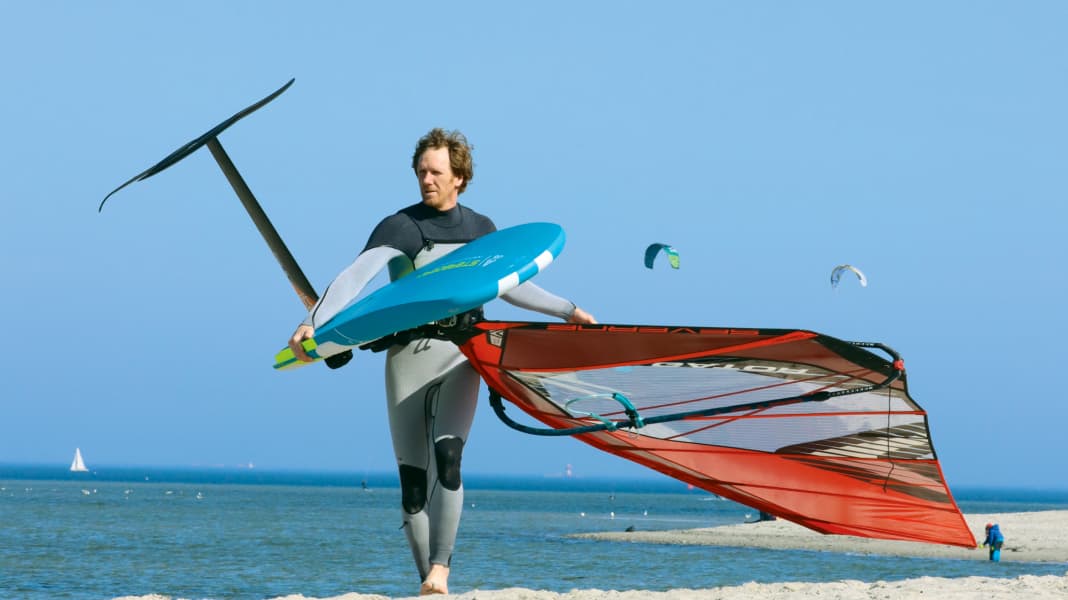
In this article:
Other parts of the Foil series:
Flight plan: One last pump on the boom, one last hiss under the board and then: silence! No more vibrations shake you, your sail stands still in the wind and all you can feel is the soft hiss of the foil beneath you and the wind in your hair. Anyone who has taken off for 100 metres for the first time will dream of this feeling the following night - flying is addictive!
From a pragmatic point of view, the fact that the fun starts a few knots earlier when windfoiling than when windsurfing with a fin, or that you can rig a sail size smaller in the same wind force, is particularly attractive.
Foil handling on land
If you switch from a fin to a foil, you will initially only notice disadvantages - at least on land - a board with a foil is simply bulky and heavier. Depending on your body size and constitution, there are several carrying techniques you can use to get your board safely and easily onto the water. For beginners, it is always advisable to bring the board and rig to the water separately.
Here are tips on how to wear the material:
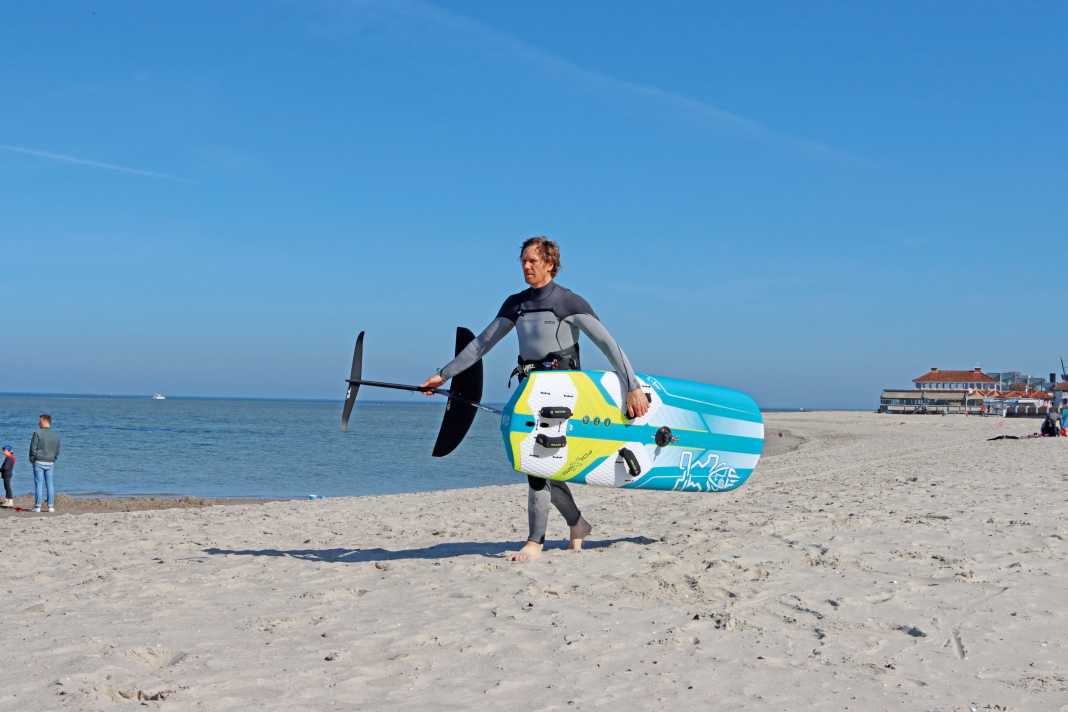




The way into the water with the foil
You can make it much easier to get into the water if you use a mast foot with a universal joint (e.g. from Chinook). If the board and rig are connected, you must always be careful not to injure yourself on the pointed foil or damage the material. You can find out what you should look out for in the following picture gallery:
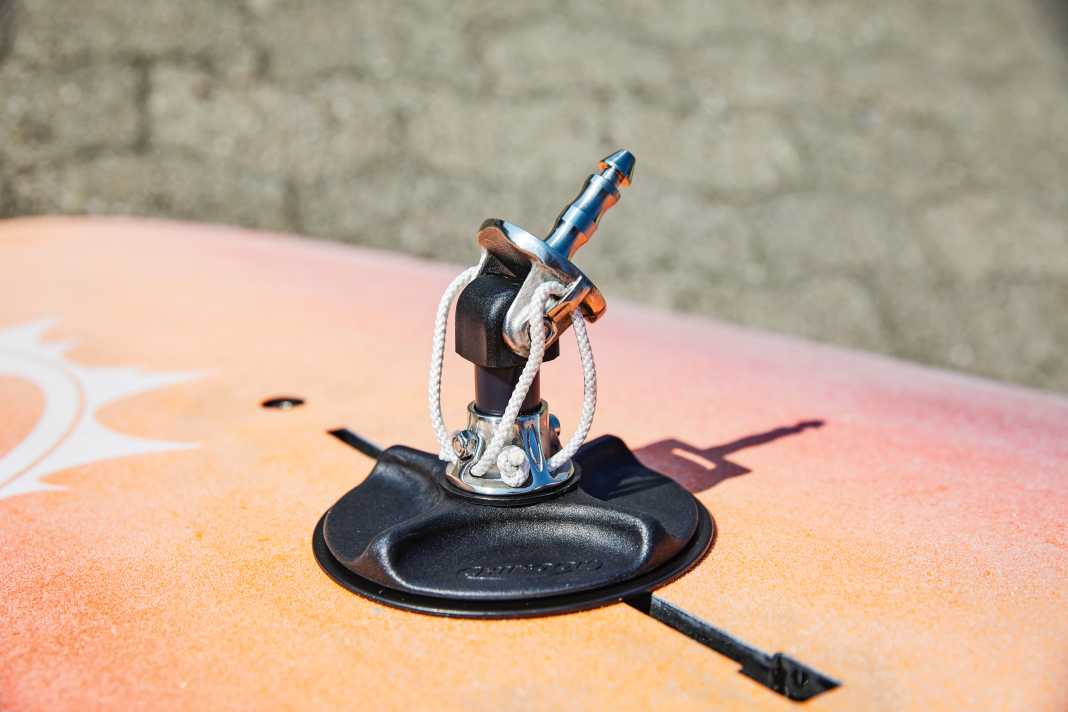




The first start on the foil
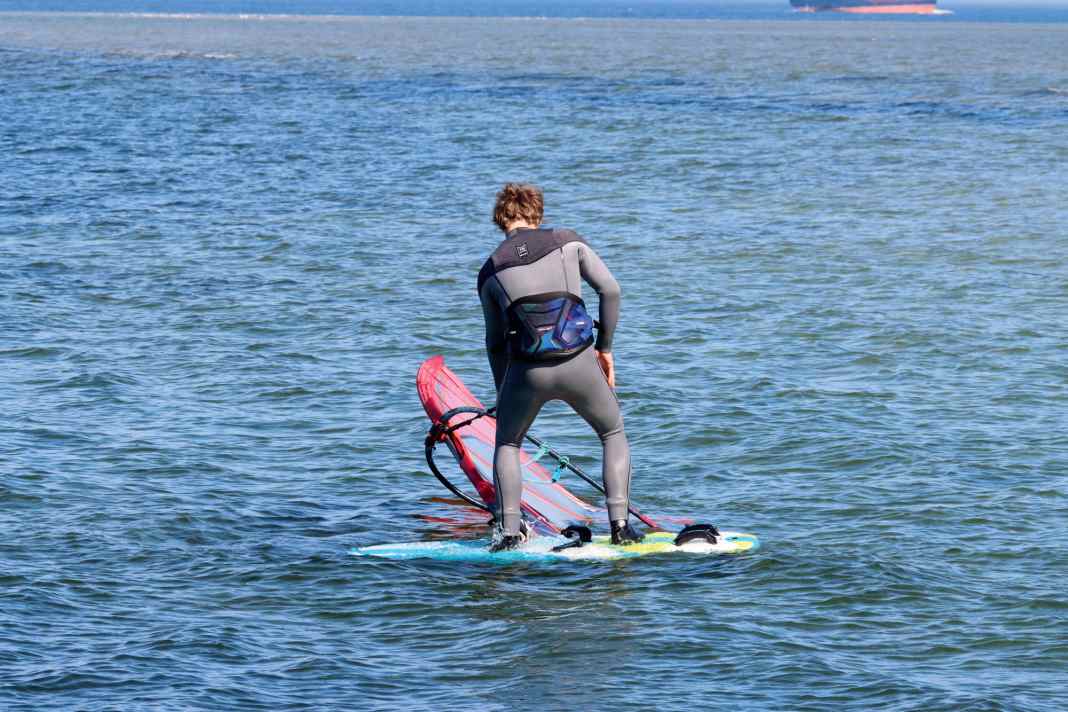





When windfoiling, you should always wear shoes to avoid injuring yourself on the foil in the water. For these reasons, it is also advisable to avoid water starts with corresponding swimming movements of the legs - sheet starts are safer. It is ideal for practising if you can achieve the necessary take-off speed without any major pumping effort. Therefore, our tip: to start with, use a sail size that you would only just be able to glide with in "normal" windsurfing with a fin.
This prevents the board from rising uncontrollably when foiling
At the beginning, it is still difficult to maintain a constant flying height. When the foil reaches the surface of the water, the current breaks and the bow crashes - the first attempts at foiling are therefore usually more reminiscent of pinball - the dolphin. The cause of an uncontrolled rise of the board is usually due to too much tail load in combination with the upper body being too far back (error pattern 1). Therefore, try to stay upright over the board at the moment of take-off. Keep your upper body upright and only exert slight pressure on the tail (second image).
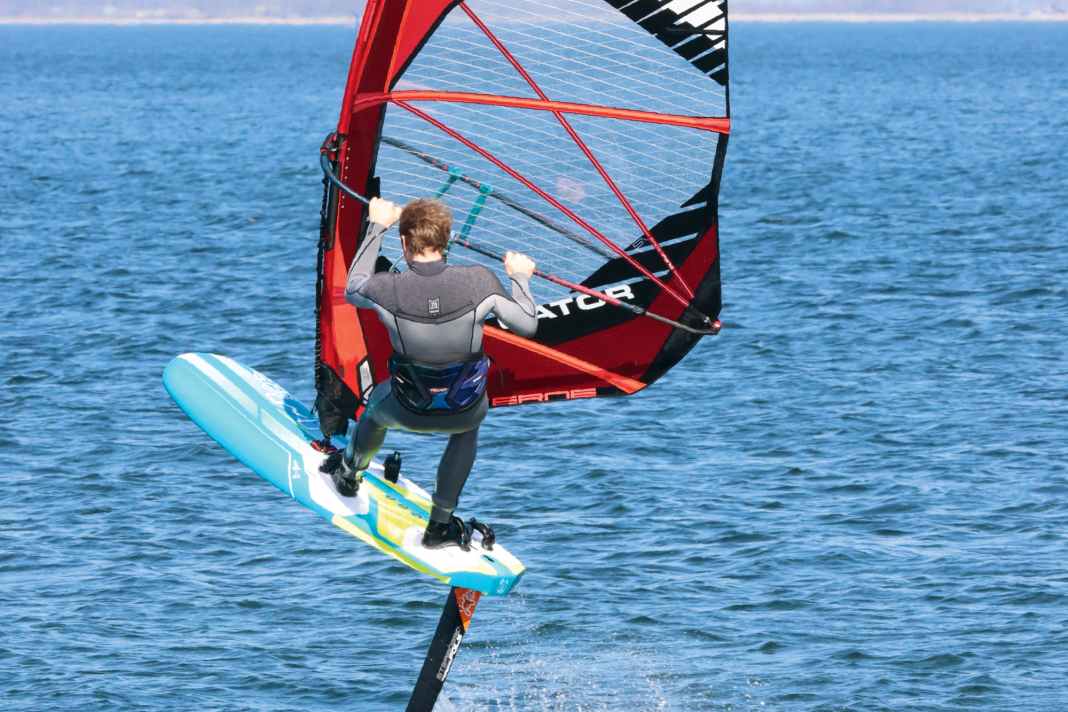


The use of a short foil mast (less than 75 centimetres in length) is repeatedly propagated as a tip for beginners. In our experience, newcomers find foiling easiest with mast lengths of 75-90 centimetres, as you have more leeway and therefore time to compensate for a sudden rise or fall of the foil - and you quickly get used to the height, which is ultimately what makes foiling so appealing!
How to store the foil material on the beach
After your first foil sessions, you will feel muscles that you didn't even know you had - especially as it can also make sense not to hook into the harness at first. The desire to take a break often comes sooner than you think. But how should you store your equipment safely on the beach?
If the board is lying alone on the beach, e.g. if you need to change the sail, it is best to lay your board with the stern into the wind and turn the foil on its side (1). Never place it on the foil and, above all, never leave it on the beach with the foil facing upwards - there is a risk of a gust of wind knocking the board over and damaging the foil. There is also a considerable risk of injury on busy beaches if the foil is upside down!
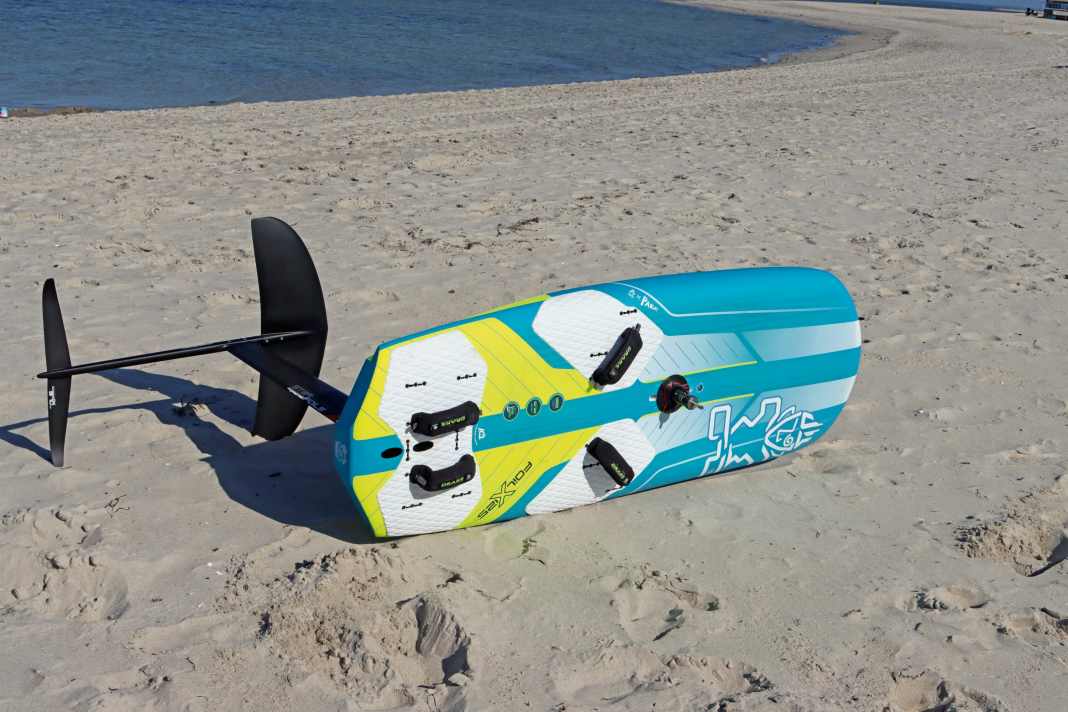



So that the break doesn't turn into a "forced break", you should seriously consider wearing a helmet when foilsurfing. (3) and think about an impact protection waistcoat. Even if foil surfing is not overly dangerous - the greater drop height and the risk of injury from the sharp foil or the hard board edge cannot be completely ignored. A current test of eight surf helmets can be found here.

